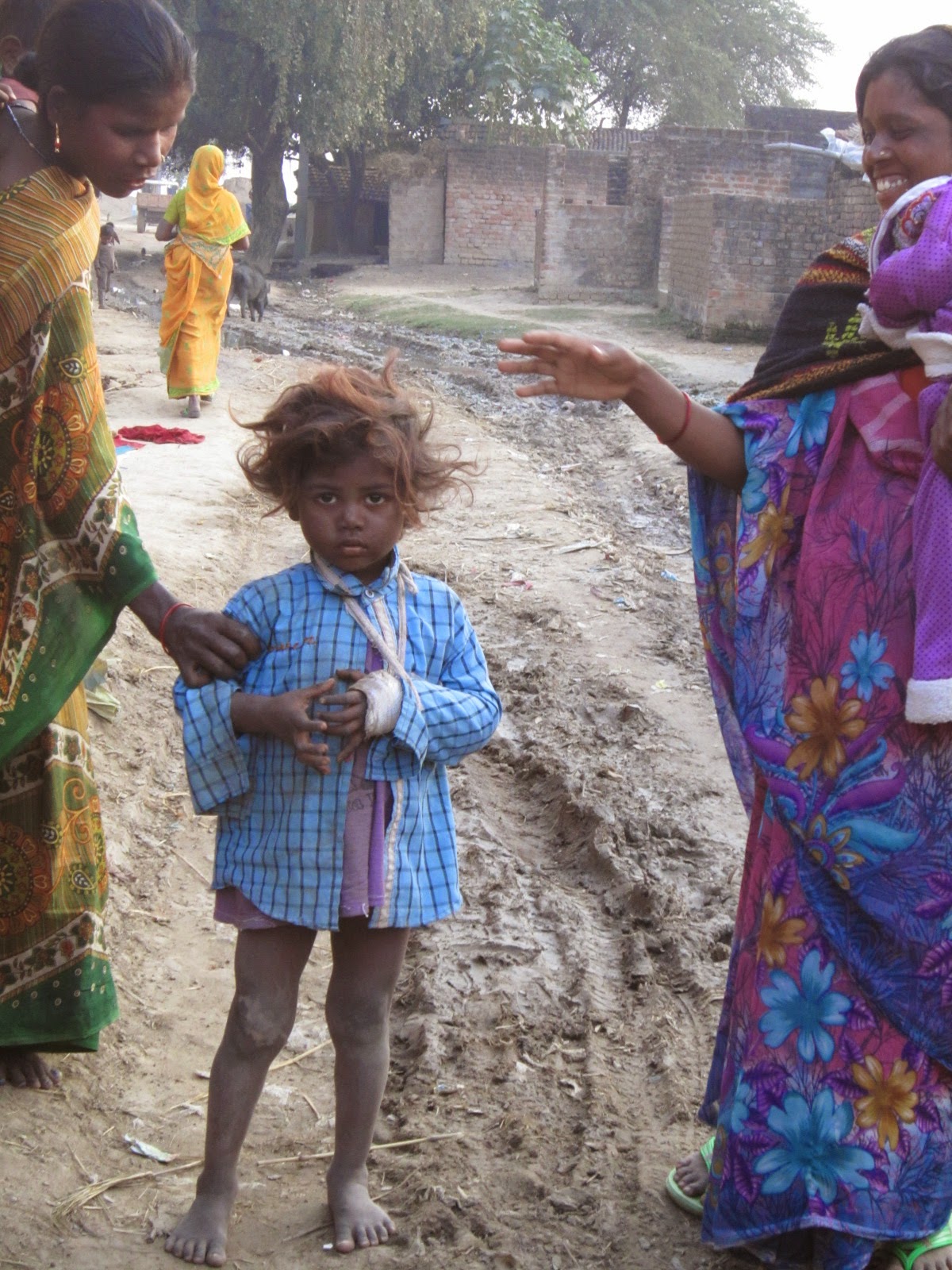Day 3:
Women’s healthcare project
On the
third day, we were given the opportunity to experience something altogether
different. We visited a village near one of the Surya Bharti alumnus’s homes,
where gathered around the porch of a building were a crowd of women, young
children, and babies. This was our first glimpse of the women’s healthcare
project that Yuki-san leads in a few different rural villages. Maternal
education lacks in these villages and mothers are often unaware of whether
their babies are growing healthily.
This
project seeks to both educate and provide resources for these mothers; it involves
measuring babies’ weight and length over a series of months and keeping a close
eye on whether they are losing weight. A loss of weight from one month to the
next signals a deeper issue in the baby’s health, as it often results from a
lack of proper nutrition, dysentery, or other causes.
Getting to
take part in this critical process was both touching and eye-opening. It was
clear the village community found it valuable; many locals even joined to help.
Two older women from the village lifted each baby onto the scale –for the newly
born, holding them carefully while the women themselves stepped onto the scale –
and called out their weight, which was diligently recorded by the head nurse (a
staff member at Surya Bharti). The babies were tranquil during this step of the
process, either completely asleep or watching with interest. The women then hoisted
the babies onto a wooden platform used to measure their length, holding the
babies’ legs straight to get an accurate measurement. The babies didn’t like
this less-than-comfortable step and often began to cry, but as a reward for all
their hard work and undoubtedly very confusing moments, candy awaited them.
Their cries subsided quickly.
A most
poignant memory from this experience was seeing the young village children watch
with curiosity the process taking place, a once-a-month spectacle that gave
them something to look forward to. Many of them used to be in the place of
today’s babies – crying after being placed on the wooden platform – but are now
healthy and smiling young children. Dusty and bare-footed, but healthy and
smiling.





















































